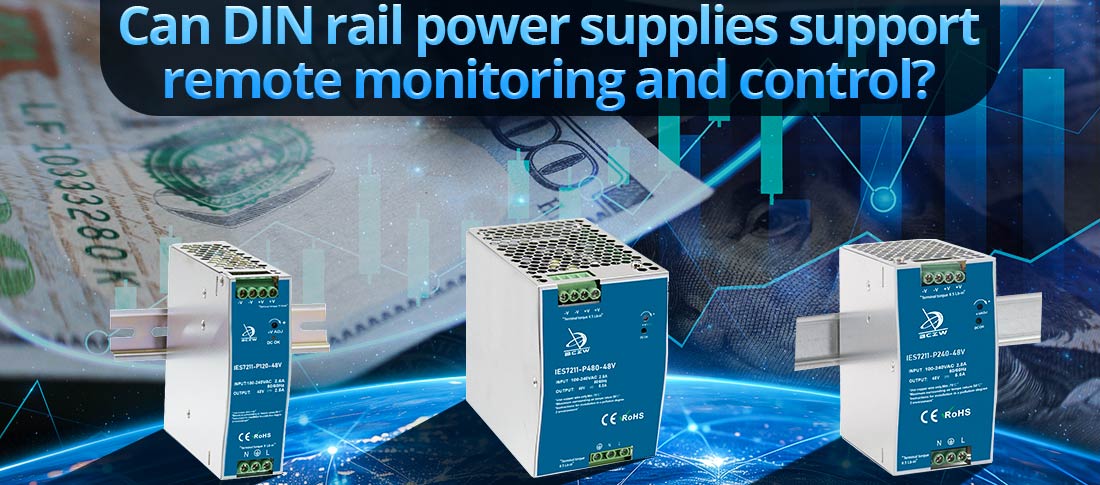
Стоимость источника питания на DIN-рейке широко варьируется в зависимости от нескольких факторов, таких как характеристики, функции, марка и предполагаемое применение. Ниже приведена подробная информация о том, что влияет на цены и типичные диапазоны цен, которые вы можете ожидать для различных типов источников питания на DIN-рейку:
1. Диапазоны цен по типу источника питания
Базовые модели (малая мощность, простая конструкция):
--- Диапазон цен: от 20 до 50 долларов.
Функции:
--- Ограничено более низкой мощностью (например, 10–50 Вт)
--- Фиксированное выходное напряжение (обычные значения, такие как 12 В, 24 В)
--- Стандартная защита (перегрузка, перенапряжение и короткое замыкание)
--- Подходит для простых или малотребовательных приложений, таких как небольшие панели управления или светодиодное освещение.
Модели среднего класса (средняя мощность, расширенные функции):
--- Диапазон цен: от 50 до 150 долларов.
Функции:
--- Средняя мощность (например, 50–150 Вт)
--- Регулируемое выходное напряжение
--- Эффективность 85%–95%
--- Несколько выходных каналов
--- Компактная конструкция для установки в ограниченном пространстве
--- Подходит для промышленной автоматизации, телекоммуникаций и приборостроения.
Модели высокого класса (высокая мощность, интеллектуальные функции):
--- Диапазон цен: от $150 до $500+.
Функции:
--- Высокая мощность (например, 150–1000 Вт или более)
--- Интеллектуальные функции, такие как удаленный мониторинг и управление.
--- Расширенные интерфейсы связи (Modbus, CAN, Ethernet/IP)
--- Высокая надежность для критически важных приложений
--- Прочная конструкция для суровых условий эксплуатации (например, широкий температурный диапазон, корпуса со степенью защиты IP)
--- Идеально подходит для промышленных, возобновляемых источников энергии и крупномасштабных систем автоматизации.
2. Факторы, влияющие на стоимость
2.1. Мощность и напряжение
--- Источники питания с более высокой мощностью или специальным выходным напряжением (например, 48 В), как правило, стоят дороже.
--- Пример: блок питания 24 В, 10 Вт может стоить около 30 долларов США, а блок питания 24 В, 480 Вт может стоить около 300 долларов США.
2.2. Эффективность
--- Модели с более высоким КПД (например, 90%+), которые снижают потери энергии и выделение тепла, стоят дороже, но обеспечивают долгосрочную экономию энергии.
2.3. Функции
--- Интеллектуальные функции, такие как удаленный мониторинг, программируемые выходы или возможности резервирования, увеличивают стоимость.
--- Дополнительные средства защиты, такие как защита от перенапряжения или системы управления температурным режимом, также увеличивают цены.
2.4. Бренд и качество
--- Бренды премиум-класса, такие как Phoenix Contact, Siemens, Mean Well и Allen-Bradley, часто требуют более высоких цен из-за своей репутации надежности и качества.
--- Модели других производителей или универсальные модели более доступны по цене, но им может не хватать расширенных функций или долговечности.
2.5. Экологические рейтинги
--- Блоки питания, предназначенные для суровых условий эксплуатации (например, экстремальных температур, высокой влажности или воздействия пыли), обычно стоят дороже.
--- Пример: источник питания на DIN-рейке со степенью защиты IP67 для наружного использования будет дороже, чем модель, предназначенная только для внутреннего использования.
2.6. Сертификаты
--- Продукты с такими сертификатами, как соответствие UL, CE или RoHS, как правило, стоят дороже из-за дополнительных необходимых стандартов тестирования и производства.
3. Типичные затраты в зависимости от применения
Системы автоматизации:
--- Стоимость: 50–300 долларов США.
--- Требуется мощность от средней до высокой, возможности резервирования и совместимость с промышленными протоколами связи.
Светодиодное освещение:
--- Стоимость: 20–80 долларов США.
--- Обычно малое энергопотребление и простая конструкция.
Телекоммуникации:
--- Стоимость: 150–500 долларов США+.
--- Часто модели высокого класса с интеллектуальными функциями и несколькими выходами.
Системы возобновляемой энергии:
--- Стоимость: $200–$500+.
--- Модели высокой мощности с дистанционным мониторингом, прочными корпусами и широким диапазоном входного напряжения.
Панели управления:
--- Стоимость: 30–150 долларов США.
--- Средняя мощность с базовыми или настраиваемыми функциями.
4. Дополнительные расходы
Аксессуары:
--- Крепления, кронштейны и крышки на DIN-рейку: 5–20 долларов США.
--- Проводка и разъемы: 10–50 долларов США.
Установка:
--- Стоимость профессиональной установки: 50–200 долларов США, в зависимости от сложности.
Обслуживание:
--- Затраты, связанные с периодическими проверками или заменой (при необходимости).
5. Советы по экономии
--- Определите свои потребности: избегайте переплаты за функции, которые вам не нужны. Например, если удаленный мониторинг не требуется, выберите более простую модель.
--- Учитывайте эффективность: инвестиции в высокоэффективную модель могут сэкономить на затратах на электроэнергию в долгосрочной перспективе.
--- Пакетные покупки. Покупка нескольких блоков питания или объединение их с другими компонентами может привести к скидкам.
--- Проверьте гарантии: убедитесь, что на продукт распространяется хорошая гарантия, поскольку это компенсирует долгосрочные затраты в случае необходимости ремонта или замены.
6. Заключение
Стоимость Источники питания на DIN-рейку зависит от таких факторов, как мощность, функции и применение. Базовые модели для простых приложений начинаются примерно с 20 долларов, а модели высокого класса для промышленного или специализированного использования могут превышать 500 долларов. Понимание требований к электропитанию вашей системы и условий окружающей среды имеет решающее значение для выбора правильного источника питания в рамках вашего бюджета.